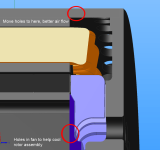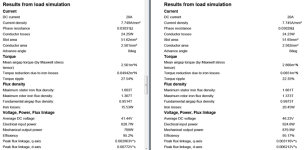Thanks madin.madin88 said:very nice motor!
what about a venting system with air intake on one side blowing through the stator / windings and outtake the hot air on the other side?
I think this would enhance the cooling performance..
I thought that cooling the endturns of the windings would probably be more effective than trying to force a flow through the air-gap. I'll probably pot the windings inside the core, for maximum conduction. The idea is to have one core design which can be used with a sealed case or with a vented case and fans.
If I wanted to vent axially through the motor, I think I would add an external fan unit onto the case. This would increase the overall length, of course, which I didn't want to do with this version.
Hopefully, I'll only need to dissipate about 50 Watts to meet the Motor Challenge...




